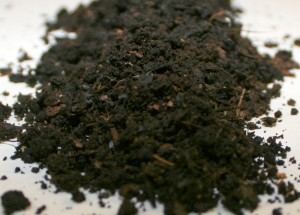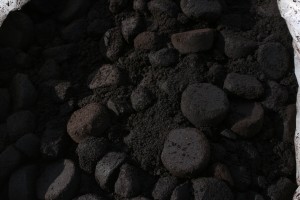THREE TYPES OF PEOPLE – THREE TYPES OF COMPOST
NOTE: Each year Arlington holds an EcoFest where people gather to learn about various environmentally related issues. This year I was asked to discuss compost with people. Below is a version of what I will distribute at the event.
“The beauty of compost is that it only needs to be as much of an art or science as we wish it to be. It’s like walking. You can train for a marathon or you can simply put one foot in front of the other, and eventually you will get where you need to be.” – Wayne Morris of Bloomingdale, N.Y.
There are at least three basic types of people who compost, each with their own method:
- Good Citizen Composter
- Garden Composter
- Compost Fanatic
The Good Citizen Composter and Garden Composter will both compost very similarly. To do either method requires the same basic steps:
- Add all vegetable scraps and paper (tissues, paper napkins and paper towel) waste.
- Add carbon-rich materials and mix. Carbon material (leaves, newspaper, hay, etc.) will both facilitate composting and keep smells down.
- When full, start a new pile and within a year your first pile should be mostly decomposed.
If you’re a Good Citizen Composter that really is all you need to do. The finished product can be tucked under bushes, tossed into a back corner somewhere or given to a friend. You’re doing a great thing keeping waste from the incinerator and keeping garbage trucks from hauling that stuff around in 3 mpg trucks. Thank you!
If you’re a Garden Composter then you’ll want to do a few additional things:
- Make sure materials you add to the compost unit are chopped small. You don’t need to cut up your paper napkins or chop a head of lettuce that’s gone bad, but if you’ve got vines in your garden, cut ‘em up so they decompose faster. Tall kale stalks at the end of the season? Chop it up. Your compost will do its thing faster, and you can get usable compost sooner.
- Turn the pile. You don’t need to turn the whole thing at once. Turn as you add items, and every once in a while try to dig deeper to turn things. This can be done with a compost aerator tool or a four-pronged “cultivator” rake. For the daily mixing/turning I like the cultivator rake, which doesn’t require any strength or serious effort.
If you’re a Compost Fanatic you follow the same basic rules but you will need to work harder. In the winter of 2011/2012 I made three cubic yards (about $75 worth) of compost using this method:
- Get free used coffee grounds from the local coffee shop as frequently as possible. Be nice to the staff and share some of your harvest.
- Make sure you add at least 2 – 3 times as much carbon material as coffee grounds by volume (not by weight). Without this the pile will stink and you’ll produce ammonia, which is no good for plants or humans.
- Turn frequently once it gets hot. Use an aerator tool, cultivating rake or a pitchfork, but turn often, daily if possible.
- Watch the moisture. Once a pile gets hot, microbes need water – aim for “damp sponge” moisture level.
- To help maintain the pile you’ll do well purchasing a compost thermometer for $30.
- In short, actively seek out your nitrogen rich/carbon rich materials and add them as quickly as possible (in the appropriate proportions) to your pile.
You can see more information & lab analysis of compost I made with only coffee grounds & newspaper.
WHAT TO ADD/AVOID:
- Anything vegetable (except walnuts or excessive amounts of oil) is fine.
- Avoid all animals/animal products (eg, bones, meat scraps, cheese) in home composting, except egg shells.
- Leaves are good. Shredded leaves are better – they break down faster and leave you with a finer compost.
- Newspaper is good but shredded newspaper is better. Avoid glossy pages, inserts and (last checked in 2011) avoid local papers which sometimes use non-vegetable inks.
- Don’t add sticks, they’ll only annoy you. Cork will not decompose in your child’s lifetime. Skip it.
- Soak bread products in water until it is mushy – this makes it unattractive to rodents.
A special note on yard waste:
Grass clippings are a great item to add to compost, but for a few things:
- If you let the clippings fall on the yard, you’d avoid much of the need to add compost to your yard because the grass would decompose in place and nourish the lawn.
- The National Academy of Sciences found that homeowners commonly use more pesticides per acre than farmers. In large municipal piles the pesticides and herbicides should become inert – that is not necessarily true for small home compost.
- So if you’re using grass clippings, make sure they’re not treated with any toxic chemicals.
A special note on coffee grounds:
Used coffee grounds are free and full of nitrogen. They are very helpful in getting a compost to heat up quickly. Used coffee grounds are NOT ACIDIC, despite what generations of gardeners have said. The acid all washes off into the drink itself.
WHAT ELSE TO KNOW:
If you read online about how to make compost it can be very exciting and very confusing. Follow the advice above and you’ll be fine. Here are a few more pieces of useful information:
- You can spend hundreds of dollars on fancy compost contraptions that may or may not work as well as ones you can get from the town for $40. Studies show that one cubic yard is the ideal size for getting a good hot compost – the town sells the New Age Composter Bin-24, which can be sized to one cubic yard.
- You do NOT need to start with a full container of raw materials. Many web sites make it sound like you need to have all the materials on hand and dump them all in at once in order to make compost. That is not the case. Add as you gain materials or, if you want to make lots of compost fast, actively seek out materials (eg, coffee grounds and leaves) but there is no need to have everything on hand at once.
- If your compost smells like ammonia, you’ve got too much nitrogen/not enough carbon. Add shredded leaves or newspaper and turn the pile, perhaps daily, for a few days.
- If your compost smells like sewage it is too wet. Add dry materials (eg, shredded leaves or newspaper), turn frequently and try to prevent water from getting in (eg, cover the top.)
- If you see ants in your compost it is too dry.
- If you bring the kitchen compost container out daily you shouldn’t have any indoor odors.
- No matter how finely you shred and no matter how much you turn, you’ll end up with some spots where materials didn’t break down. Toss those into the new compost pile and they’ll help get things cooking in no time.
FINISHED COMPOST
“Finished compost” is almost a term of art. The finished compost from your back yard is great stuff but will look nothing like what you buy from the store. Why? Because the compost you buy in bags has been “screened” or sifted through wire mesh.
The quality of your finished, unscreened compost is just as good (often better) and can be used just like the stuff from the store, unless you’re spreading it on your lawn or making potting/seed starting soil.
If you want that fine composted product for your lawn or seedstarting, you can make a screen (AKA sifter) using scrap lumber and some “hardware cloth” (like chicken wire, but a square mesh) available at any hardware store. Using a ½” screen is good, but if you really want the look and feel (literally) of the stuff you get in a bag then do a ¼” screen. It isn’t easy to sift though, as finished compost is typically wet. Remember, if you’re going to want to screen your compost then try to make your life easier by adding only smaller, chopped items to the compost. This is especially true of the carbon materials.




This is so fabulously written! Thank you for this. We have had a compost going for the past few years, and it had been great. Re:bugs, as above, is it normal to have small beetle-like things? Recently whenever I open the lid I see tons of these small – maybe 1/2″ – bugs scatter everywhere…I have been assuming they were a natural byproduct of the compost, but wonder now if they are bad, or a sign of something bad?
Hi Jeremy:
Thanks for all the composting info! I purchased an envirocycle composter and have just started using it in my small backyard. I’m putting in greens and browns and it seems to be working/breaking down the materials. My question is are small gnats (fruit flies) normal? There are a small number of gnats flying around when I open it (not a large swarm). Just want to be sure I’m doing things correctly. Thanks again for all the information about composting.
Geraldine,
Sorry for not responding sooner. Some amount of fruit flies are normal and nothing to be concerned about, but left unchecked can become an unpleasant problem.
The flies are, obviously, from the fruit you’re adding – bananas are the most common culprit. Try to bury the banana peels, either under compost already in the bin or by adding leaves or newspaper. If your compost is “hot” then the banana peel (or other fruit scrap) will decompose quickly, and fruit flies should be kept in check.
If they become a more significant problem then try adding additional carbon material (leaves/newspaper) and turning more frequently (eg, once per day). Within a few days it should sort itself out.
Happy composting!